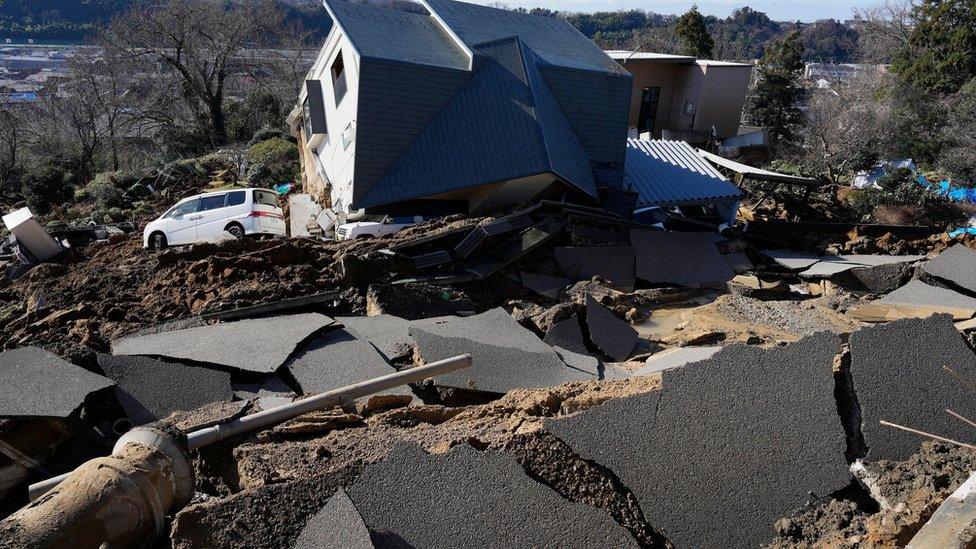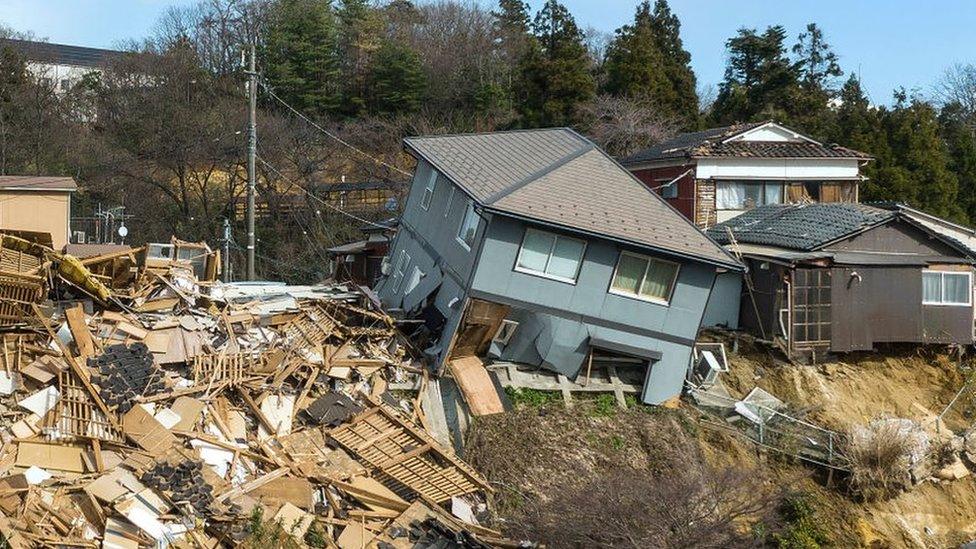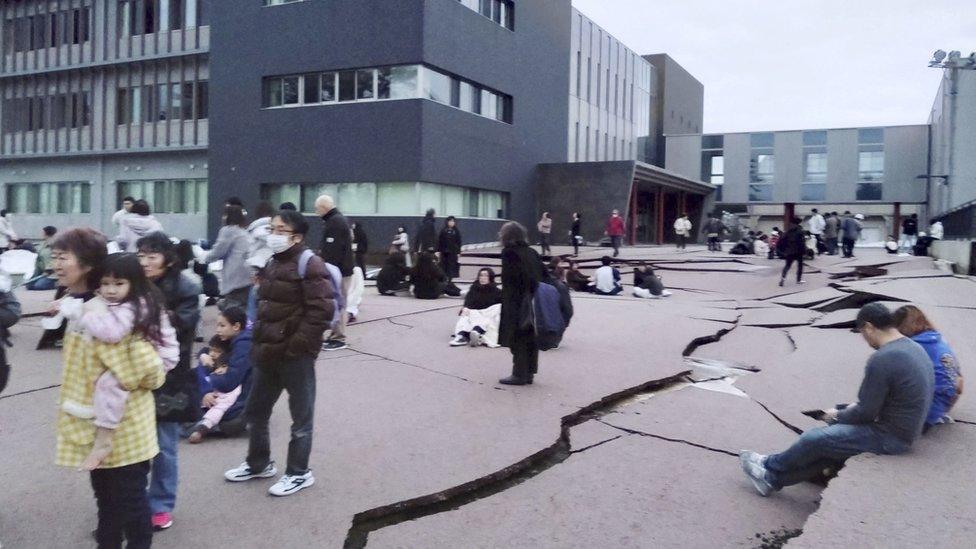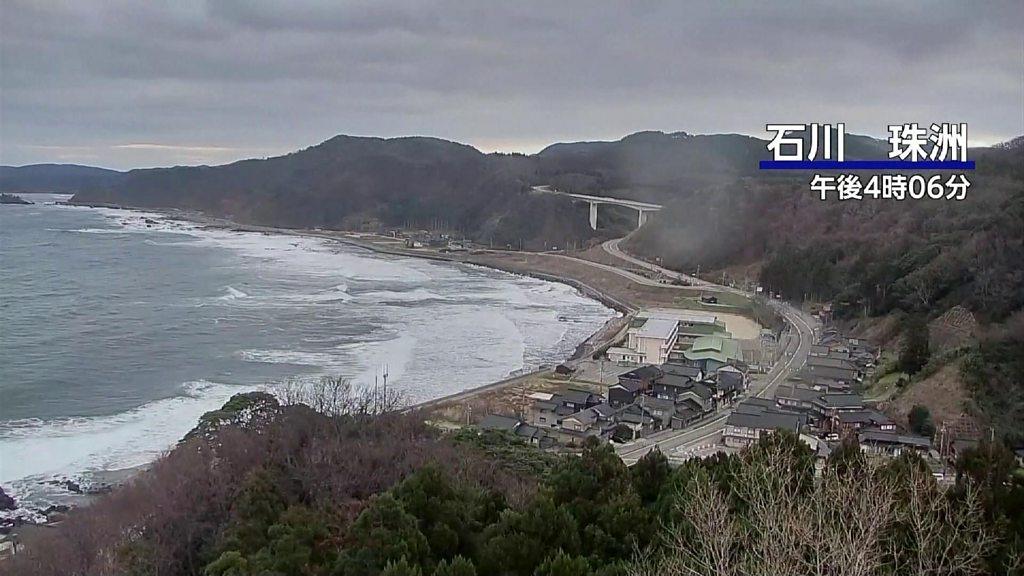How Japan’s powerful earthquakes have shifted the land
- Published

The earthquake, which took place on New Year's Day, has left a trail of destruction across Ishikawa Prefecture
The power of the magnitude 7.5 quake in Japan can be seen in just how much the ground moved.
It rose up by more than 4m (13ft) in places and moved sideways by over a metre.
Earthquake-prone Japan is hugely advanced in monitoring what happens when the ground shakes. That's why it can make such precise measurements.
There's a network of GPS stations dotted at strategic points right across the country. When an earthquake strikes, scientists can tell exactly how much each one has moved, showing how the landscape has buckled and shifted.
This system shows that the land moved as much as 130cm to the west after the earthquake on Monday.
Meanwhile, scientists have also been keeping an eye on Japan from space, comparing satellite images taken before and after the earthquake.
On its latest pass, the ALOS-2 spacecraft reported that the distance between itself and the ground had shortened as the Earth's surface had risen up under the force of the tremor.
The ground moved the most on the western side of the Noto peninsula. The ocean floor shifted off the coast there, generating tsunami waves of about 80cm in height.
Fortuitously, the uplift may actually have lessened the impact of the waves when they arrived at the shoreline.
WATCH: Moment quake hits Japanese coastline in Ishikawa prefecture
Any death is one too many, but it is remarkable just how few have occurred, even as searches continue for those still trapped in the rubble. The loss and damage models have been predicting an eventual toll of, at most, a hundred or so.
It's worth comparing this event with last year's M7.8 quake in Turkey. The two were broadly similar in terms of the energy released, but the death toll in Turkey and Syria rose to 50,000 and more. Go back to 2010 and the M7 quake in Haiti. More than 100,000 people died in that horrific event.
The explanation of the difference is simple: preparedness.
Japan sits at the confluence of four major tectonic plates. It is one of the most seismically active areas on Earth; the country accounts for about 20% of global quakes of Magnitude 6.0 or greater, with seismometers recording some kind of event every five minutes on average. Japan has therefore invested greatly in making its infrastructure and its population resilient.
The building codes - the rules that guide construction - are strictly enforced; and citizens are well trained in how to respond to tremors. Japan also has one of the most advanced early warning systems in the world.
Scientists cannot predict the timing and scale of an event, but once under way instruments will trigger notifications to TV, radio and cell networks. These warnings will arrive for some people distant from the epicentre perhaps 10 to 20 seconds before the onset of the most severe shaking.
That might not sound like a lot of time, but it's sufficient notice to open the door at the local fire station, to apply the brakes on a high-speed train, and for everyone to "drop, cover and hold on".
Related topics
- Published2 January 2024

- Published2 January 2024

- Published1 January 2024

- Published1 January 2024
